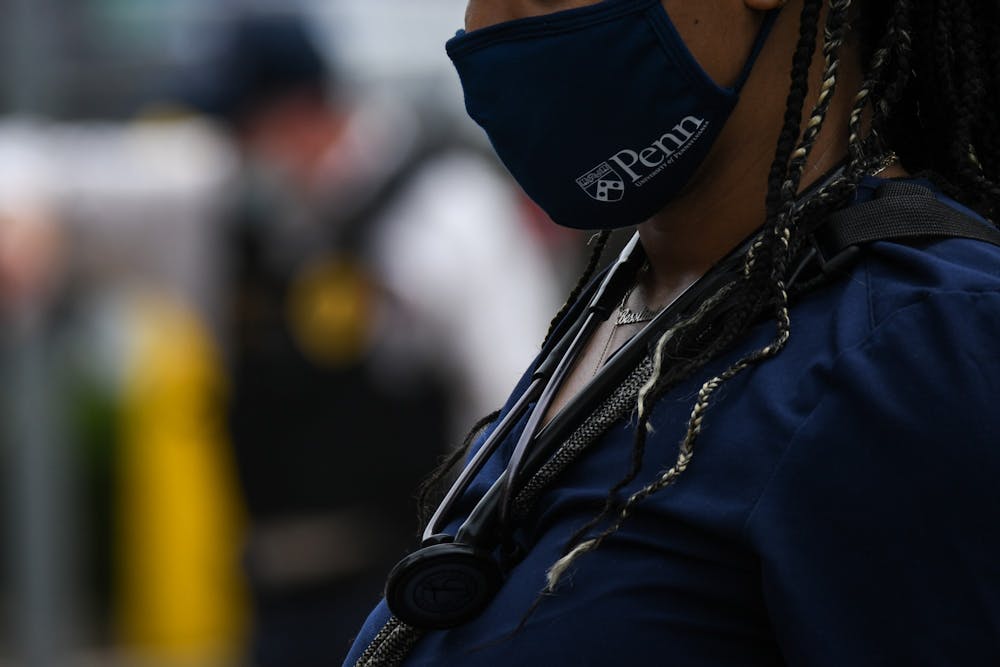The Workforce Operations Committee, Penn's University Recovery Planning Group, published a guide for faculty and staff for returning to campus, outlining a phased approach, mask-wearing policies, and compensation.
The "COVID-19 Return to Campus Guide for Penn Faculty and Staff," released in mid-July, was developed by a 20-member committee comprised of faculty and staff from various University departments.
“The committee gathered information from experts on the many different relevant topics, reviewed recommendations from health organizations, and drew from practices being adopted and implemented by other organizations," WOC co-Chairs Laura Perna and Jack Heuer wrote in an emailed statement to The Daily Pennsylvanian. Perna serves as vice provost for faculty and Heuer as vice president for human resources.
While compliance with the 22-page guide is not mandatory, the University expects faculty and staff to voluntarily follow the guide's recommendations, Perna and Heuer wrote.
"We hope that all faculty and staff will engage in the practices needed for the health and safety of our community, including wearing face coverings, keeping physical distance, and regularly washing hands," they wrote.
The campus guide also outlines three different staffing approaches: remote work, alternating days, and staggered reporting/departing.
The guide outlines Penn’s plan to have faculty and staff return to campus through a series of phases. Before reporting to campus, however, employees must complete mandatory, online COVID-19 training to receive guidance on protection measures and working safely. Faculty and staff also must verify that they are free of any symptoms related to COVID-19.
The document also provides guidelines on classrooms, meeting spaces, and break rooms, urging faculty and staff to utilize online resources for meetings when possible. In-person meetings are restricted to 10 people and spaces cannot exceed 50% capacity.
RELATED:
As some colleges switch to a remote fall, Penn declines to say whether it will change plans
Penn faculty sign letter criticizing U.S. COVID-19 response, calling for national shutdown
In Phase 1, those who can only perform their jobs on campus will be permitted to return. Phase 2 involves faculty and staff reporting to campus to complete specific tasks and the rest of their work remotely, and Phase 3 consists of employees returning to campus if they wish, but utilizing telework whenever possible.
Perna and Heuer wrote that each of Penn's 12 schools will be able to make individual decisions regarding bringing faculty and staff to campus.
Two-ply, cloth masks have been mailed to all faculty and staff members as a reminder to "protect oneself and others" and reinforce the guide's emphasis on face-covering procedures.
These guidelines will be posted on signs placed across campus to signify physical distancing recommendations, Perna and Heuer wrote.
The campus guide also outlines recommendations for using public transportation and Penn transit, adjusting to workplace floor plans, and using communal restrooms, elevators, and stairs. All University buildings will be restricted to PennCard access, and entry to buildings will be regulated and monitored, with a chance that departures and arrivals of employees during “rush hours” may be scheduled in 30-minute increments to reduce congestion, according to the document.
The guide provides a chart that details what kind of compensation faculty and staff may be entitled to if their job requires them to return to campus but they are unable. The options include paid administrative leave, leave of absence without pay, paid time off, sick time, short-term disability, family and medical leave, workers’ compensation, and/or reasonable accommodation.
Perna and Heuer wrote the guide will continue to change depending on the latest available information regarding the spread of COVID-19.
“We hope that all faculty, staff, and students will comply with these guidelines and understand the role they can play in the community," they wrote.









